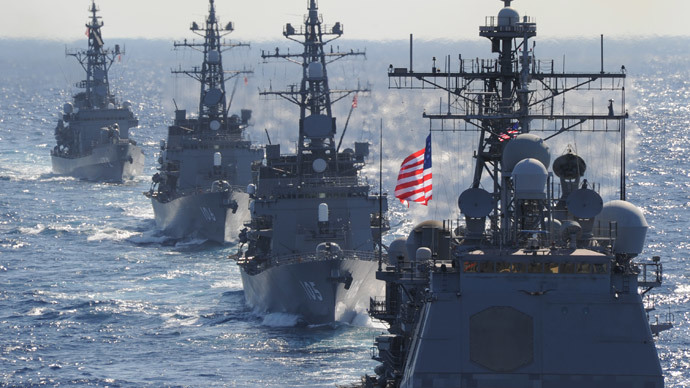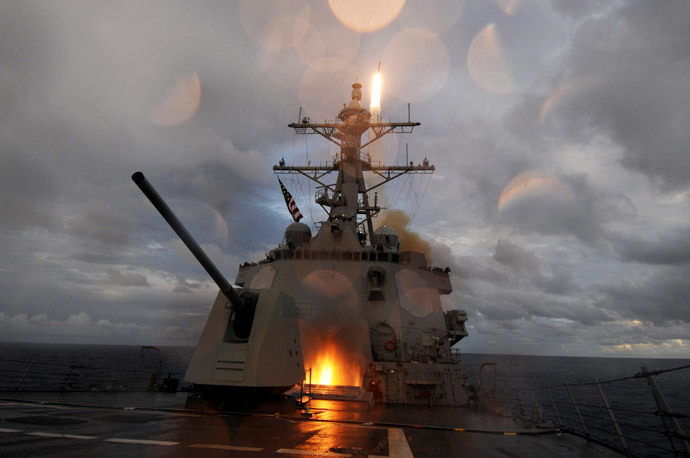Pacific naval powers sign pact aimed at preventing conflicts

As US military action increases in the western Pacific, more than 20 countries became signatories to an agreement on Tuesday that establishes guidelines for communication, while hoping to halt military maneuvers in disputed areas.
More than 20 countries from the Western Pacific region unanimously signed up to the non-binding framework, including China, Japan, the Philippines and Malaysia. The signing ceremony occurred at a meeting of the Western Pacific Naval Symposium (WPNS) in the eastern Chinese coastal city of Qingdao.
The WPNS includes among its members the Australia, Chile, Canada and a number of Asian countries, including China, Japan and South Korea, as well as the United States.
A draft of the document, obtained by Reuters, is described as a handbook for “maneuvers and communication when naval ships and aircraft from the signing countries encounter each other unexpectedly.”
The agreement comes amid heightened naval activity in the region, largely due to a change in US defense policy that now focuses greater attention on the Pacific Ocean.

In June 2012, the US Navy announced it would reposition its forces from about a 50-50 percent division between the Pacific and Atlantic oceans to a 60-40 tilt toward the Pacific. The decision involves the arrival of six US aircraft carriers, as well as a menacing school of various smaller vessels, including cruisers, destroyers, Littoral Combat Ships, and submarines.
Earlier this month, US Defense Secretary Chuck Hagel announced that the US fleet of Aegis destroyers in the Pacific will be increased by two, for a total of seven.
The destroyers are equipped with long-range radar with powerful tracking capacities, and are armed with the so-called Standard Missile 3 to intercept short-to intermediate-range ballistic missiles.
The move served as a wake-up call to the Chinese Navy, as well as other concerned Pacific nations, which have reason to feel threatened by the surge of American naval power in the region.
Just months following the US announcement of a major redistribution of its naval assets, China unveiled its first aircraft carrier, a former Soviet vessel that was refurbished and named Liaoning. Now China is busy developing a carrier-based fighter-bomber, the J-15, derived from Russia's Sukhoi Su-33.

At the very least, Pacific nations have expressed concern that a serious altercation may arise from an accident or miscommunication between the many international vessels now patrolling the Pacific. Those concerns became very real in December when a US guided missile cruiser nearly missed colliding with a Chinese warship escorting the Liaoning aircraft carrier.
The United States has defense treaties with Japan and the Philippines, increasing the possibility of Washington being dragged into a conflict.
Meanwhile, the US has intensified its military cooperation with Japan. Tokyo is prepared to host two massive surveillance RQ-4 Global Hawk drones at the Misawa Air Base beginning around October.
Chinese and Japanese ships routinely pass each other near a chain of disputed rocky formations in the East China Sea, which also increases tensions and justifies the need for better communication guidelines among the various foreign vessels prowling the waters.
"The number of communications between the Japanese and Chinese defense forces is small," Japanese Navy Captain Masahiro Sakurai told Reuters.














